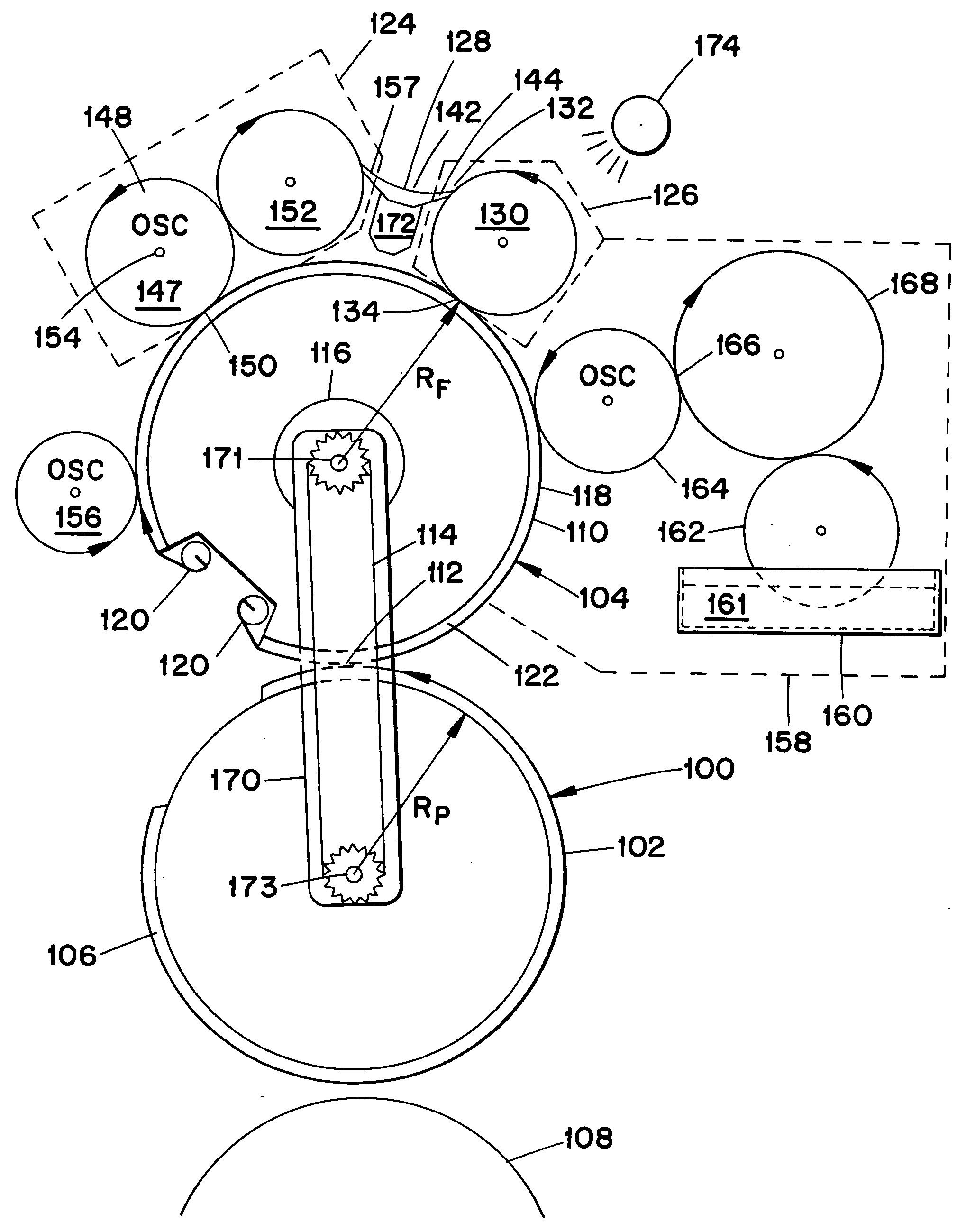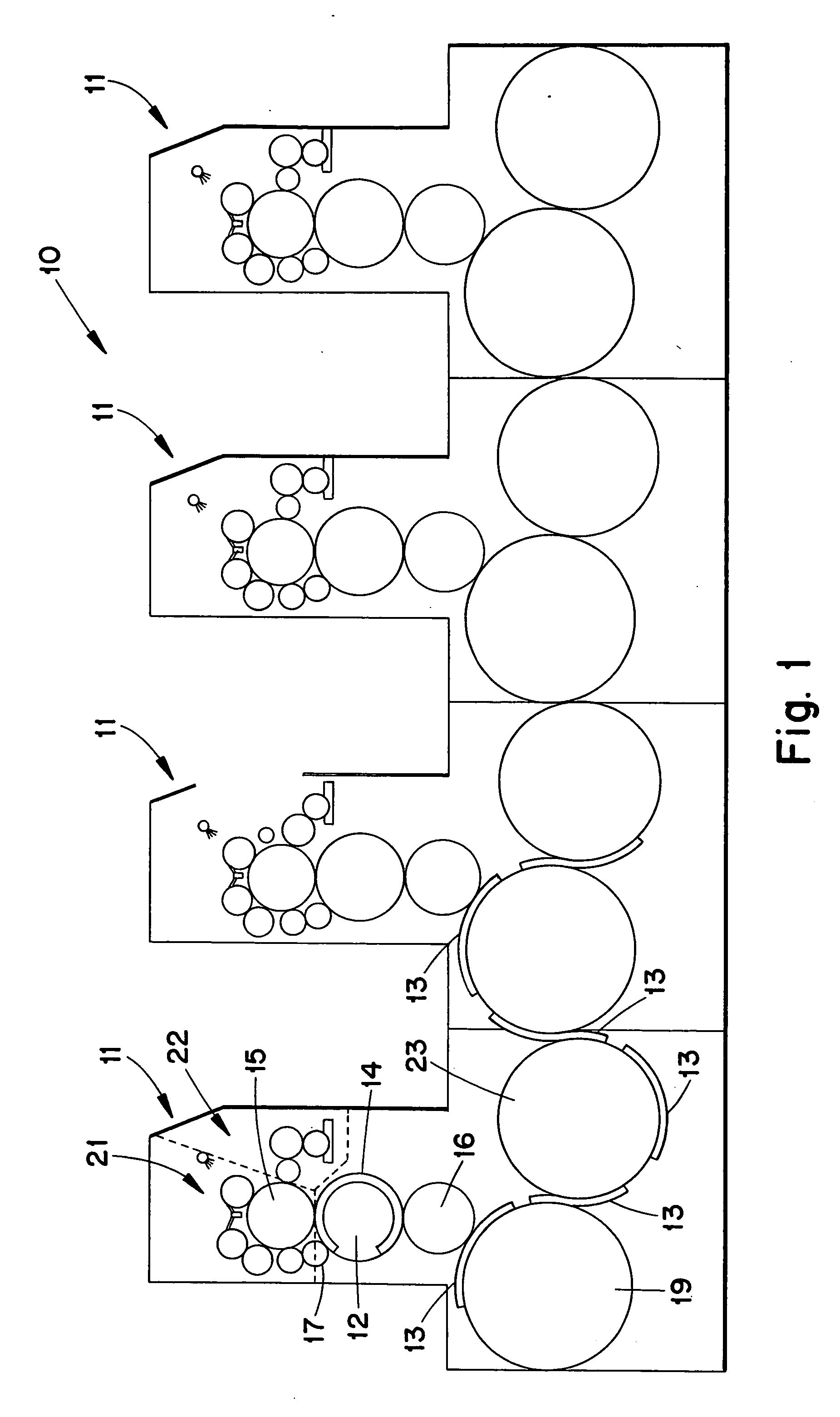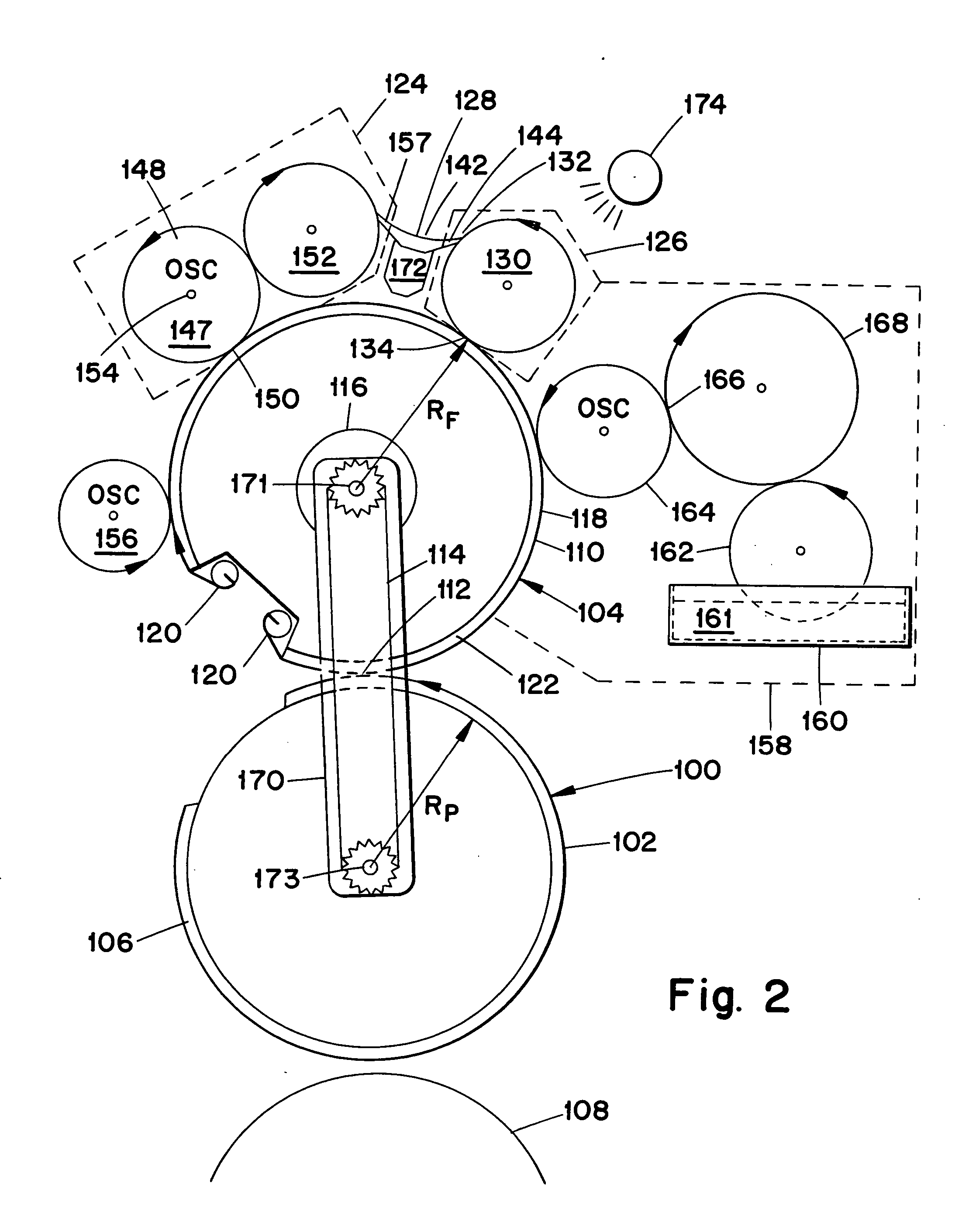Printing systems and methods using keyless inking and continuous dampening
a printing system and dampening technology, applied in office printing, rotary letterpress machines, rotary intaglio printing presses, etc., can solve problems such as color control and ink feedback loss into dampening fluid reservoirs, and the solution has not been completely successful in solving these problems
- Summary
- Abstract
- Description
- Claims
- Application Information
AI Technical Summary
Benefits of technology
Problems solved by technology
Method used
Image
Examples
Embodiment Construction
[0013] The inking systems disclosed herein employ at least one form roller in contact with the printing plate cylinder. Another roller may contact the plate and remove residual ink from non-image areas of the plate surface. A subtractive roller system, which contacts the at least one form roller, removes excess ink and dampening solution from the form roller after printing. An applicator roller then applies the necessary ink film to maintain desired color to the form roller. A continuous duty dampening system then continuously resupplies the required amount of dampening fluid as required by the ink film on the form roller.
[0014] Preferred embodiments of the present invention include a printing system having a rotating plate cylinder carrying a printing plate and a main form roller for applying ink to the printing plate. In accordance with this aspect of the invention the plate cylinder and the form roller are rotated at the same rpm so that the same areas on the form roller contact...
PUM
 Login to View More
Login to View More Abstract
Description
Claims
Application Information
 Login to View More
Login to View More - R&D
- Intellectual Property
- Life Sciences
- Materials
- Tech Scout
- Unparalleled Data Quality
- Higher Quality Content
- 60% Fewer Hallucinations
Browse by: Latest US Patents, China's latest patents, Technical Efficacy Thesaurus, Application Domain, Technology Topic, Popular Technical Reports.
© 2025 PatSnap. All rights reserved.Legal|Privacy policy|Modern Slavery Act Transparency Statement|Sitemap|About US| Contact US: help@patsnap.com



